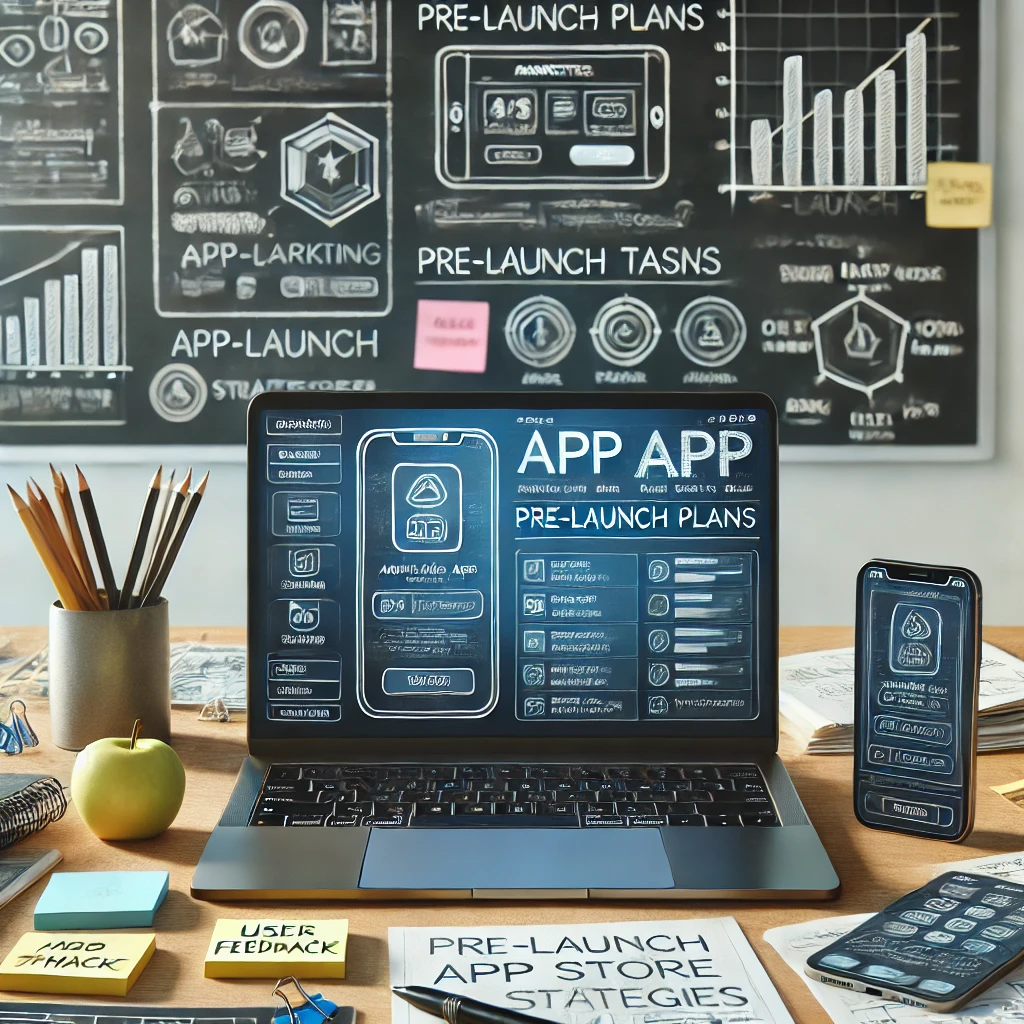How to Launch an App: Strategies for a Successful Market Entry

Pre-Launch Strategies
1. Finalize Your App
Before you even think about launching, ensure your app is truly ready:
- Conduct thorough testing across different devices and scenarios
- Fix all critical bugs and optimize performance
- Implement analytics to track user behavior and app performance
Tip: Consider a soft launch or beta testing phase to gather initial feedback and fix any issues before the full launch.
2. Optimize for App Stores (ASO)
App Store Optimization (ASO) is crucial for visibility:
- Choose a catchy, relevant app name
- Research and use relevant keywords in your app title and description
- Create an eye-catching app icon
- Prepare high-quality screenshots and videos showcasing your app’s features
- Write a compelling app description that clearly communicates your app’s value
Tip: Study successful apps in your category for ASO inspiration, but ensure your app stands out.
3. Build a Pre-Launch Landing Page
Create buzz before your app is even available:
- Design a simple, attractive landing page for your app
- Include key features, screenshots or videos, and an email sign-up form
- Consider offering early access or special launch offers to build an initial user base
Tip: Use tools like Unbounce or Leadpages to create professional landing pages quickly.
4. Develop a Content Marketing Strategy
Start creating and sharing valuable content related to your app:
- Launch a blog on your app’s website
- Create informative articles, infographics, or videos related to your app’s niche
- Guest post on relevant blogs or industry websites
- Engage with your target audience on social media platforms
Tip: Focus on creating content that provides value to your potential users, not just promotional material.
5. Reach Out to Media and Influencers
Build relationships with people who can help spread the word:
- Create a press kit with information about your app, high-res images, and contact details
- Reach out to tech bloggers, journalists, and industry influencers
- Offer exclusive previews or interviews about your app
Tip: Personalize your outreach and focus on how your app can provide value to their audience.
6. Plan Your Launch Day Marketing Blitz
Prepare a coordinated marketing effort for launch day:
- Schedule social media posts across all your platforms
- Prepare email campaigns for your mailing list
- Plan any paid advertising campaigns (social media ads, Google Ads, etc.)
- Coordinate with any partners or influencers for simultaneous announcements
Tip: Create a detailed launch day schedule to ensure all marketing efforts are synchronized.

Launch Day Strategies
1. Monitor and Respond
On launch day, be prepared to:
- Monitor app store reviews and ratings
- Respond quickly to user feedback and questions
- Keep an eye on your app’s performance and address any issues promptly
Tip: Set up alerts for app mentions and reviews so you can respond in real-time.
2. Activate Your Marketing Blitz
Execute your prepared marketing plan:
- Post across all your social media channels
- Send out your email campaigns
- Activate any paid advertising campaigns
- Reach out to your media and influencer contacts to ensure they’re aware of the launch
Tip: Use social media management tools like Hootsuite or Buffer to schedule and manage your posts efficiently.
3. Engage with Your Initial Users
Make your first users feel special:
- Personally thank early adopters for downloading your app
- Encourage users to leave reviews and ratings
- Be responsive to any feedback or questions
Tip: Consider offering a special perk or feature to your first users to encourage word-of-mouth marketing.

Post-Launch Strategies
1. Gather and Analyze Data
Start collecting and analyzing data immediately:
- Monitor key performance indicators (KPIs) like downloads, active users, and retention rates
- Use analytics tools to understand user behavior within your app
- Pay attention to user feedback and reviews for insights
Tip: Set up custom reports in your analytics tool to easily track your most important metrics.
2. Iterate and Improve
Based on your data and user feedback:
- Prioritize bug fixes and performance improvements
- Plan future features and updates
- Regularly release updates to keep your app fresh and engaging
Tip: Communicate planned improvements to your users to keep them engaged and excited about your app.
3. Continue Marketing Efforts
Don’t let your marketing efforts die down after launch:
- Maintain a consistent content marketing strategy
- Continue engaging with your audience on social media
- Look for opportunities to showcase your app (e.g., industry events, podcasts)
- Consider implementing a referral program to encourage user growth
Tip: Develop a long-term marketing calendar to ensure consistent efforts post-launch.
4. Expand Your Reach
Look for ways to grow your user base:
- Consider launching in new markets or languages
- Explore partnerships with complementary apps or services
- Implement cross-promotion strategies with other app developers
Tip: Research localization best practices before expanding into new markets.
5. Optimize Monetization
If your app is designed to generate revenue:
- Analyze user behavior to optimize in-app purchases or ad placements
- Test different pricing models or subscription tiers
- Consider introducing new premium features based on user demand
Tip: Always balance monetization efforts with user experience to maintain long-term user satisfaction.
Key Metrics to Track
To measure the success of your app launch, keep an eye on these important metrics:
- Downloads: The number of times your app has been installed
- User Acquisition Cost (UAC): The cost of acquiring each new user
- Daily Active Users (DAU) and Monthly Active Users (MAU): The number of unique users who engage with your app daily or monthly
- Retention Rate: The percentage of users who continue to use your app over time
- Session Length: How long users spend in your app per session
- User Lifetime Value (LTV): The total value a user brings over their entire relationship with your app
- Conversion Rate: The percentage of users who complete desired actions (e.g., in-app purchases)
- Churn Rate: The percentage of users who stop using your app
- App Store Ranking: Your app’s position in app store search results for relevant keywords
- User Ratings and Reviews: The quantity and quality of user feedback in app stores
Tip: Set specific goals for each of these metrics and regularly review your progress.

Common App Launch Mistakes to Avoid
- Launching too early: Ensure your app is fully tested and polished before launch.
- Neglecting marketing: Start your marketing efforts well before the launch date.
- Ignoring user feedback: Be prepared to listen and respond to your users quickly.
- Underestimating the competition: Know your competitors and what sets your app apart.
- Failing to plan for scalability: Ensure your app and infrastructure can handle rapid growth.
- Overlooking app store guidelines: Familiarize yourself with and adhere to all app store policies.
- Focusing only on downloads: While important, also prioritize user engagement and retention.
- Neglecting post-launch support: Be prepared to provide ongoing support and updates.

Conclusion: Launching Your App for Long-Term Success
Launching an app successfully requires careful planning, coordinated execution, and ongoing effort. By following these strategies, you’ll be well-prepared to introduce your app to the market and set it up for long-term success.
Remember, a successful launch is just the beginning. The real work lies in continuously improving your app, engaging with your users, and adapting to the ever-changing mobile app landscape.
With thorough preparation, a solid marketing strategy, and a commitment to your users, your app has the potential to make a significant impact in the app market. Are you ready to launch your app and make your mark in the digital world? The journey to app success starts now!
